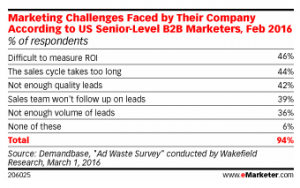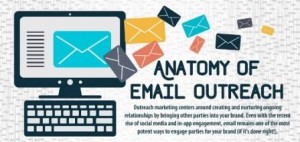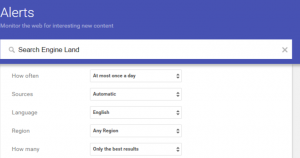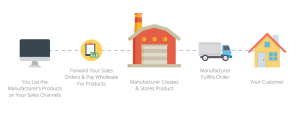Do you ever wonder what the world would be like if everyone said exactly what they thought, no matter what?
If you have, it’s probably led to the imagination of a bleak existence that has left you thankful for reservation and politeness. Honesty is often harsh enough, especially when dealing with the general public.
Although, it would be nice if people didn’t waste your time.
As a sales rep, it never gets any easier to give your best effort during a demo or sales call just to realize (sooner or later) that the person you’re talking to is not serious.
They aren’t going to buy. They knew it all along but you have to find out—and sometimes it stings.
While you may hold onto your frustration for a while after these calls, you may not have to deal with as many going forward.
Two of the sales terms that will help you out immensely in this area are “suspect” and “prospect”. Knowing the difference and how to label leads in your funnel quickly will save you precious time.
Defining these two terms is exactly what we hope to do in this post. Let’s get into it.

What is a Suspect?
We’ve alluded to this in the introduction of our post.
A suspect is the person who will stick around for a certain amount of time in the sales conversation and funnel process without any means or intention to buy the products you’re selling.
Identifying these “leads” quickly means less frustration, less wasted time, and (typically) higher conversions.
You may be thinking, “I know they are the people I don’t want to talk to, but how do I find them out?”
Well, it’s tricky.
Often times, these pipeline fillers are just as active and engaged as any other lead. It makes them very difficult to identify in the marketing phase.
- Some are just bored at work, looking for stuff they can claim is relevant.
- Others want to impress their boss, but don’t have pocketbook to buy your solution.
- Others still just wanted your downloadable resources or thought the webinar sounded good and decided to stick around to see what else you got for them.
Sure, they may buy in the future. However now—they’ve got nothing for you.
How do you identify these particular leads and stop wasting time? Good question. To answer, we first have to look at the definition of a “prospect”.
What is a Prospect?
No need to hide this one.
If a suspect is someone who is wasting your time, a prospect is a lead that is worth your time. The one who is genuinely looking for a solution to their problem. Someone who wants to hear about your offer in order to make an actual decision.
If you were doing demos to prospects all month long, your quota woes would be a thing of the past.
Individuals who make up prospects may include:
- A decision maker that is researching a new solution for a common pain your products solve.
- A member of a buying team charged with finding a solution/better solution similar to your products.
- A supervisor of the decision maker who has involved him or herself in finding a solution.
Keep in mind that prospects still need to be closed. The point of this post isn’t to give you a magic bullet that means just dialing the digits and sending the invoice.
Our intention is to help you define, determine, and identify the differences between those who are close to buying and those that aren’t. In other words, you won’t speak with prospects less—just suspects.
Savvy?
The Number One Difference Between Suspects and Prospects
In any conversation, it’s a two-way street. One person talks, the other listens—and vice versa.
Both suspects and prospects will talk with you, engage with your content, and maybe even reply to emails and answer the phone. However, if you listen closely and ask the right questions (more on that further down); you’ll notice that suspects act a little suspect.
Mainly, they won’t give up the information you need to determine their readiness. So, the counterintuitive answer is:
If you can’t get the information you need from a lead, they are most likely a suspect.
Why?
The suspect isn’t really looking and that means they don’t have to give you proprietary or other knowledge that isn’t public. If someone is genuinely looking for a solution, they’ll give you the details (if you ask them to tell you).
So, the simple answer is to ask qualifying questions. But it’s not quite that simple.
If you are on a sales call, you get the ball rolling to the point of momentum. If they buy, it’s great. If they don’t, you’ve wasted an hour or so of your life.
Even if you find great qualifying questions to weed out the suspects, you’re on a “sales” call. At the moment you realize this, do you end the call with, “Hey! You’re just a phony!!”
Of course not. We don’t live in a world where you can just say what you think, remember?
The answer?
Add a Step to Your Process
Many sales teams can quickly weed out suspects by offering a quick qualifying call to determine the severity of the need.
Not a sales call, but a call that determines the readiness and “fit” of a lead. A call needs to be had, too. Live chat is a very cool feature, but this step is better on a call.
There are so many benefits to doing this that it could warrant its own post. However, we will go over a few here to let you know.
- Instant Weed Eater: Offering a call to suspects is like kryptonite to the majority of them. Mention that you’ll be asking them some quick questions to determine their needs and they’re outta here. It’s the equivalent of approaching a person in a retail location and hearing, “Just looking!”
- Prospect Identifier: Offering the same call opportunity to a prospect, and they’ll perk up. Depending on the immediate nature of their need, they may even clear the schedule. So much of sales is reading the responses of your leads and that includes things like this scenario.
- Professional Appearance: Believe it or not, it looks way better on you to add a step to the process. This fact is especially true for B2B and high-priced items. Having a qualifying call shows the lead that you have a process (a.k.a. You have your stuff together). It’s just professional to ensure the quality of the potential partnership.
- Pre-Sells Prospect: If you recognize on your call that the person on the other end is a prospect, don’t just end the call. Begin casting the vision that your products will create. Find out as much information as you can and use it to tailor your demo or sales call perfectly to them. They’ll be more excited for the next call and so will you.
Like we said, these calls are amazing.
Having a Proper Qualifying Call
First, you have to define the success of this call.
It can go well two different ways. If you are talking to a suspect and it ends in 10 minutes—success. Likewise, if you are speaking with a genuine prospect it may run up to 45 minutes.
Remember, if you’re picking up the prospect clues; it’s time to start preparing your pitch.
Keep them on the line and gather all the intel you can to rock your demo, but DON’T pitch them. Once they’re more interested and looking to talk further about the solution—END THE CALL.
Seriously, we didn’t mean to yell at you in all caps, but you’ve got to stop short of your pitch.
Consider this a bonus tip. It’s about the process. Sure, sometimes they’ll be ready to buy right then and there. Rare, but it happens. Scheduling a call allows you to use the intel in your pitch later and gives you a point to refer back to (namely the qualifying call).
What Questions Should I Ask?
HubSpot did a great piece that outlines the key areas any rep will want to find out during a qualifying call. It’s a valuable resource given the fact that most questions you’ll ask won’t come from a template.
That said, a couple of template questions never hurt anyone (that we know of). Take these and tweak away to your needs.
- What has caused you to find a solution for [pain/problem]?
- Have you used any other solutions (either third-party or in-house)?
- Do you have a budget in mind and how does the purchasing process look at [business]?
- What issues or concerns could keep you from making a decision to solve [pain/problem] in the near future?
- If you don’t purchase a solution, who and how would that affect your workplace?
While these are (very) general, even using these tailored to your qualifying call would yield incredible data from prospects and send suspects packing without the wasted time of a full pitch.
Now that you know the difference and how to separate them—get on the phone. Get your list of qualified leads and start weeding out suspects and warming up prospects.
Business & Finance Articles on Business 2 Community(254)






